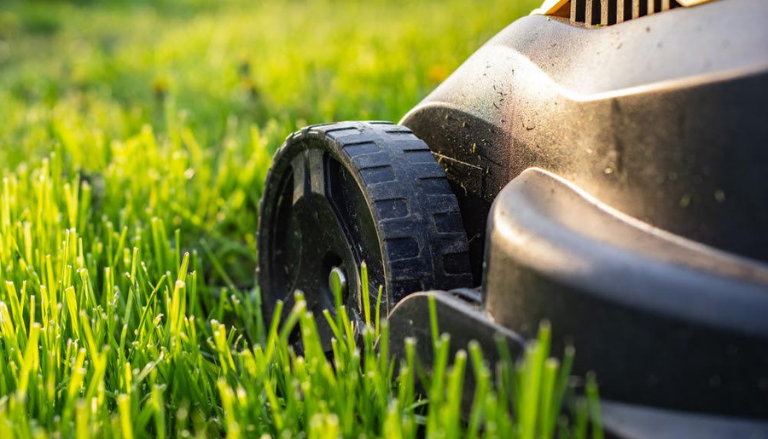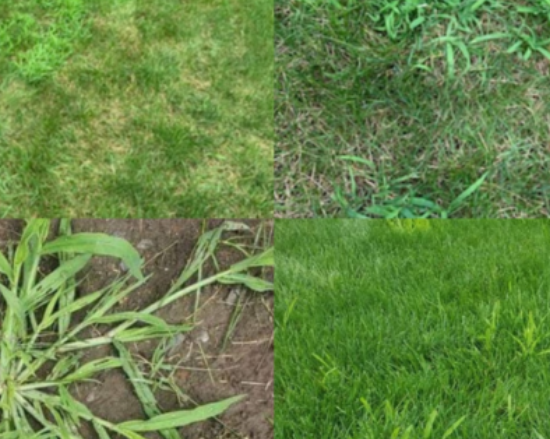As you know, your satisfaction is our top priority! That’s why we want to make you aware of how to get the best results from your lawn mowing.
Here is a guide that will help you maximize those results. It is important to remember that there is no such thing as a miracle formula- only judgment matters. These tips are provided for your information.
In order to obtain good results, it is very important to know when to mow your lawn, at what height to cut it according to the weather conditions, the mistakes to avoid, the tips to know to optimize the results, and much more.

Basic principles
- The longer the grass is, the more resistant it will be. Its resistance will help during droughts (lack of water), to resist insect damage (bugs, grubs, sod webworms) as well as all other potential problems (stresses). When the grass is long, the roots of your lawn are deeper. It is wise to take this aspect into consideration when conditions are more difficult. However, we strongly recommend that you mow your lawn when it gets too high.
- Lawn mowing can cause stress if not done properly. In other words, significant damage can be done. This is the most common mistake we face every year!
- When done properly, regular mowing will stimulate your lawn. It will increase its density, speed up the repair of sparse areas, and much more. In other words, mowing stimulates the growth of new stems that will be able to repair/densify your lawn.
- The grass varieties used on your property and those used on the golf course are not the same! The varieties used on your property are actually grasses that require less maintenance, and are more resistant, but should not be mowed too short. In other words, your yard is not a golf course!
- It is important to consider the weather conditions before mowing the lawn. When you mow, you remove some of the water reserves stored in the foliage. Additonally, mowing causes water stress if it is not done under the right conditions. So, if you are not the type to water your lawn regularly, it is strongly advised to mow according to the weather conditions. The drier it is, the less you should mow. Conversely, the more rain we receive, the less stress the lawn will be under. *Unless we have arid conditions, the lawn can easily support the stress of mowing. Fertilizers and water stimulate your lawn making it strong.
- Your involvement in watering your lawn will be a determining factor in establishing the suggested mowing height. If the weather conditions are dry and you are not watering, I suggest that you do not mow, or that you mow as high as possible. On the other hand, if the weather is rainy and we have a lot of moisture on the ground, your involvement in watering and the stress caused by mowing will be less (if any). This will allow you to mow your lawn regularly
- Just because you mow shorter doesn’t mean your lawn will grow any slower! So, if your goal is to reduce your mowing frequency, this is not the solution. Also, if you damage (stress) your lawn, it may not grow as fast, but it will be for the wrong reasons.

Here is damage caused by mowing during the heatwaves of 2019. The lines you can see are actually the marks of the mower wheels. In my opinion, this mowing was done by a lawn mowing compagny during the peak heat of the day.
There are several issues that can arise when it comes to mowing the lawn.
When, how, and at what height to mow?
There are three important factors to consider when determining how to mow. The right method will vary depending on the weather conditions, your involvement with watering and the desired mowing height.
1. Always avoid mowing too short.
A mowing height of at least 3 inches is recommended. Also, a higher mowing height is discouraging to insect pests such as grubs. It is more difficult for grubs (adult white grubs) to lay their eggs if your lawn is higher. For your information, egg laying takes place between June 15 and the end of July.
2. Avoid mowing during the heat of the day.
It is best to mow in the morning or evening when temperatures are cooler. This will significantly reduce stress on the lawn.
3. Please mow the day after or the day before a “good” rain.
This is probably one of the best ways to keep your lawn stress-free and have a great looking lawn. However, you must remain vigilant. The weather can change very quickly and the weather channels tend to be wrong in their forecasts. Therefore, you must be certain that it will rain the next day if you decide to mow the day before (especially if you have experienced dry temperatures over a long period of time). When in doubt, it is best to mow after it rains.
4. Prioritize watering your lawn after each mowing (unless weather conditions are favorable, as mentioned in #3).
This will counteract the potential stress on your lawn.
5. Observe the weather over the long term before mowing.
For example, if there is a three-week rain-free forecast, even if it rained the day before, mowing will not be recommended. Especially if you are not the type to water.
6. Prioritize grasscycling (mulching) when possible.
7. Be careful when your lawn is really long.
You should not mow more than 30% of its height at a time. In light of this situation, we suggest that you mow in two stages. First, you will have to adjust the mower a little higher and wait a few days. Then, you can mow the lawn at the original height you wanted. It is very important to do this because mowing more than 30% of the height of your lawn at once causes a lot of stress that makes your lawn look less beautiful.
8. Do not stress your lawn! We recommend that you refrain from cutting the lawn too short or mowing it during dry periods.
A lawn that is under stress from poor mowing will be much more vulnerable. It will also be much more attractive to insects like chinch bugs. Also, if it is stressed, the insect damage will be much greater. As a result, it will be much less beautiful overall.

Understanding your mower and its maintenance
- The numbers on your mower near the wheels are actually indicators of the mowing height in inches. So normally, if your mower is set at height 3, it will be mowing at 3 inches. Unless you are an expert in this field, we strongly advise against mowing below 3 inches. We recommend that you test your height before you start mowing.
- A sharp blade gives a much better result. In some cases, when the mower blade is not sharp enough, the mowed grass will have yellowed tips. In this case, you will need to call an expert to sharpen your blade!
- We recommend that you use gasoline with a higher octane rating (e.g. Super, Supreme). This is the gasoline that is normally suggested by the manufacturers. You will avoid many problems!
- We recommend that you use a shredder blade. Mulching blades crumble the grass strands when mowing, which gives a much better result. And even if you don’t do grasscycling every time you mow, the shredding blades make your job easier.
- Difficulty starting the mower (probably a clogged or dirty carburetor);
- That you want to change the mower blade to a mulching blade;
- You want to sharpen the blade.
For the maintenance or repair of your lawnmowers and/or snowblowers:
Christian Auger 514-862-1904


